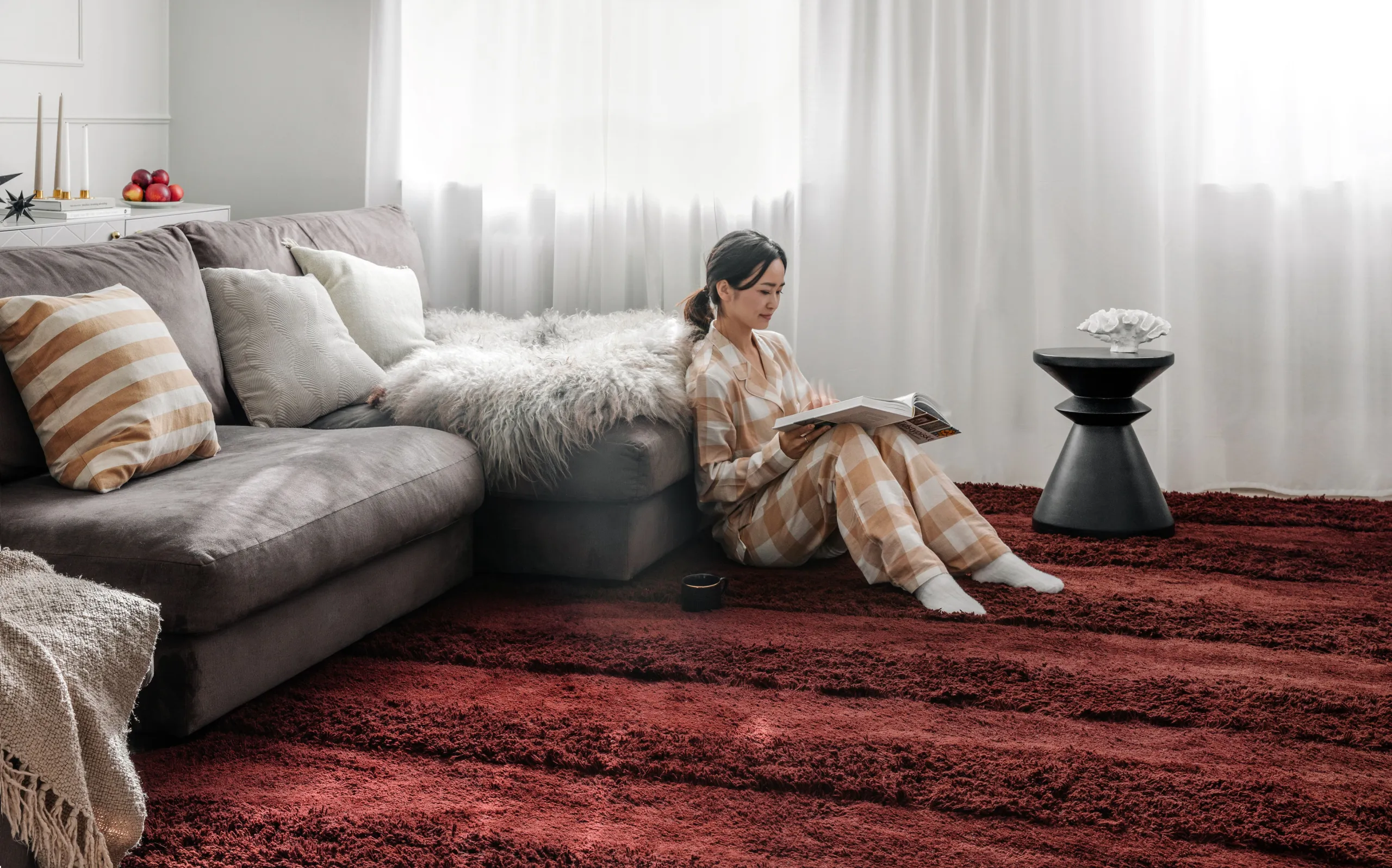In light of the sharp increase in energy prices around the world, we wanted to let you know about the cost-saving benefits of owning a large wool rug. To help businesses make good decisions when choosing rugs for their interior projects.
To answer the million-dollar question, can you use rugs to save energy and with that save money? The quick answer here is, yes you can. Rugs can be used as good insulators making a room feel warmer by keeping heat inside and preventing it from escaping out through the floor when there are differences in temperature indoors vs. outdoors. Tiny air pockets are created in the wool rug due to the characteristic wool fibers, making the rug a great insulator by slowing down the transfer of heat through it. Approximately 10-20 % of the heat loss in a room is transferred out through the floor.
An important thing to note here, though, is that the choice of material and size does matter, wool being a better insulator than other similar textile materials and recommended for maximal effect. In short, covering a large part of the floor with a thick, and dense wool rug can have a positive effect in reducing heat loss and in making the room feel warmer. This will help you reduce energy consumption by making it possible to lower the temperature indoors while still feeling warm inside. Every degree in lowered temperature will help reduce the energy consumption connected to heating by around 5 %.
 A soft and cozy shaggy rug made from wool is a great choice in adding both softness, reducing sound, and, of course, helping to keep the room warmer. In this article, we are showcasing the New York rug in color wine.
A soft and cozy shaggy rug made from wool is a great choice in adding both softness, reducing sound, and, of course, helping to keep the room warmer. In this article, we are showcasing the New York rug in color wine.
To better explain this, rugs do not directly affect the temperature in a room. However, rugs, especially those made from wool, are bad at absorbing and transferring heat, meaning that they are good at insulating a space or a room. They do this by trapping heat inside and also preventing the floor from absorbing heat from your feet through conduction when walking on the bare floor. This will then affect how you perceive the temperature in that specific space. The wool fibers also have a natural built-in resistance making sure that these rugs keep their thickness over time, compared to other types of textile material which can more easily flatten thus lowering the insulating effect.
The perceived temperature in rooms with rugs in them has shown to be 1-2 degrees higher than in rooms without. So simply by walking on soft and warm rugs rather than on the bare floor makes you feel warmer inside. Wool rugs, specifically, also help to increase the perceived temperature in a room by reducing excess moisture in the air by naturally absorbing it. A room with high humidity at lower temperatures will be perceived as colder than it actually is.

Another great option could be a thicker hand-knotted traditional rug, i.e. an oriental rug or a Berber rug (like the one shown here). These high-piled wool rugs normally have a higher knot density resulting in an even better insulating effect.
All in all, the combined benefits of adding wool rugs to a room will make it possible to reduce energy consumption. Focus on these few steps to help you find the most suitable rugs for your interior projects. Should you need further help or guidance, then please feel free to contact us in the Trade Partner Sales team.
Top 3 tips for lowering your energy consumption with the help of rugs:
- Choose wool rugs.
- The bigger the better, by covering more of your floor you will have an increased effect.
- A dense and high-piled rug will insulate better compared to a lower pile.
Here is a curated selection of warm rugs to help inspire you in finding the right rug for your project.

